Foreign Tourists Spend More in Continental Croatia Than on Coast
Just how much do foreign tourists spend in Croatia? It might surprise many to learn that visitors to the country spend more money in continental Croatia then they do along the sparkling Adriatic coastline.
As Marija Crnjak/Poslovni Dnevnik writes on the 5th of October, 2020, in the highly successful year 2019, which boasted the highest number of guests and the best levels of income so far until coronavirus-dominated 2020, Croatia had an increase in consumption per tourist.
When it comes to just how much those deeper-pocketed guests spend in Croatia, 2019 shows that there was a larger number of guests with higher incomes who spent more on catering and hospitality services, but not on other facilities, and surprisingly there was higher spending in continental Croatia than there was on the Adriatic coast.
Croatia remained primarily a holiday destination with a small share of business guests, the destination of families and couples who came mostly because of the sun and the sea, as well as the beautiful nature on the continent.
With the exception of Dubrovnik, Croatia still mostly enjoys "repeat" guests, with a small share of new ones. Half of the guests received information on Croatia through social networks, traditional media has very little significance for tourists, and guests staying in continental Croatia appear to have a stronger intention to recommend a trip to Croatia to others than those who have visited the Adriatic. In this coronavirus year, on the other hand, for at least some time, there was a considerable loss of those guests who typically have more cash to spend in Croatia, such as guests from distant markets like Asia and America.
"In order to get a clearer picture of the needs and habits of Croatian tourists, the Ministry of Tourism and Sport undertook a survey in 2019 called TOMAS. Although the time of the pandemic (2020) isn't covered, the research indicates trends and provides guidelines. It was this year that we saw how domestic tourists played an important role. Croatian tourists primarily appreciate the natural beauty, personal safety, atmosphere and hospitality of the local population. By further encouraging the quality of the offer, combining green and blue Croatia, gastro-tourism and active holidays, in a pandemic-laden year, we're starting with an action intended for domestic tourists. The offer is about halved prices - from tickets to national parks, museums, through to transport and accommodation,'' stated the Minister of Tourism, Nikolina Brnjac.
Poslovni Dnevnik was the first to detail the research on the attitudes and consumption of tourists in Croatia, the findings of which, although seemingly irrelevant in the current circumstances of the pandemic, can be useful for all tourism decision makers, from strategists to public and private sector marketers. The ongoing coronavirus crisis also partially thwarted the implementation of the first such survey, which was supposed to last from May 2019 to May 2020, and was completed two months earlier.
Through personal interviews among guests, the survey was conducted on a sample of 13,582 respondents in hotels, hostels, camps and family accommodation, in 143 places, among domestic guests and guests from 24 emitting markets.
Tomas 2019 showed that the average age of a Croatian tourist is 43 years, 43 percent of guests have a university degree, and 48 percent of guests have a monthly income at the household level of more than 3,000 euros. The sea (81%) and nature (56%) are the most important motives for coming to the Adriatic coast, followed by city breaks (24%), touring (21%) and sport and recreation (15%), while guests come to the continent primarily for nature (32%), touring (26%), city breaks (26%), sports and recreation (24%), and for work (22%).
The average of the continent also includes Zagreb, which has the highest rate of business travel, the most hotels and guests arriving by plane. At the bottom of the scale of interests of Croatian guests are culture, art and gastronomy, and only 4 percent of all guests come for work.
Slavonia is still mostly visited by resident families. Croatian tourists stay on average for 7.3 nights. In continental Croatia, the main activities are going out to restaurants, sightseeing, visits to national parks, historic buildings, museums and galleries.
The TOMAS research showed that the average daily expenditure of tourists on the Adriatic during the summer months of 2019 increased by 18 percent when compared to 2017, when the last summer survey was conducted. Expenditures for catering/hospitality services, ie accommodation services and food and beverages, increased by as much as 28 percent, while expenditures for other destination services decreased by 2 percent.
With regard to the type of accommodation, the growth of average expenses in hotels stands at 11 percent, in camps 19 percent and in family accommodation 17 percent.
In total spending, guests spend 54 percent of their money on accommodation, and 17 percent is spent on food and beverages outside of the accommodation facility. Guests with the highest average incomes come from the Republic of Korea, followed by Switzerland, the Scandinavian countries, the Netherlands and the United States. Those with deeper pockets are more interested in rural areas and sightseeing. In addition to guests from Japan who spend 206 euros a day in Croatia, guests from the USA (174 euros), the Republic of Korea (157 euros), China (150 euros) and other Asian countries (155 euros). Much closer to home here in Europe, tourists from the United Kingdom also spend an average of 143 euros.
Tourism in continental Croatia, in addition to attracting guests with deeper pockets than the Adriatic does, also has a higher share of guests discovering Croatia for the first time - the share of loyal guests is significantly higher down on the Adriatic (52 percent) when compared to continental Croatia (33 percent). The counties of Istria and Primorje-Gorski Kotar, as well as Zagreb, Slavonia and Northern Croatia, have the largest share of repeated visits during the last five years. Camp guests are more loyal than average, and among them, 74 percent have been to Croatia three or more times. Camp guests are extremely loyal to their chosen destination, and 52 percent of them have stayed three or more times in the destination where they were interviewed.
The differences between the Adriatic and continental Croatia can also be seen in how booking is carried out - guests in continental Croatia often book accommodation directly with the accommodation facility, which makes up half of the guests, and a little more than half book up to a month in advance, unlike 24 percent in Slavonia and Northern Croatia book who at the last minute, usually less than a week before their actual arrival.
Among the surveyed guests, only 8.3 percent came through package deals, and even the Chinese, in 65 percent of cases, come individually.
The biggest source of information for guests on Croatia is the Internet, half of them use social media, and fairs, television and newspapers make up a small share of informing tourists. Lika has the largest share of guests who are informed about the region online.
For the latest travel info, bookmark our main travel info article, which is updated daily.
Read the Croatian Travel Update in your language - now available in 24 languages
Continental Croatia Trains: Inland Opens Up With Green Travel
October 3, 2020 - With charter airlines in a state of flux and Croatia Railways beginning a renewal of their fleet in Slavonia, are continental Croatia trains the eco-friendly and best way to unlock the inland's amazing potential?
Everything changes. Nothing stays the same. Even before 2020 arrived, lifestyles and trends were headed in new directions. Eco-tourism and agro-tourism were two of the fastest-growing areas within the travel sector, this behaviour change a response to concerns about the environment. And nowhere in the country stands better poised to take advantage of this interest than continental Croatia.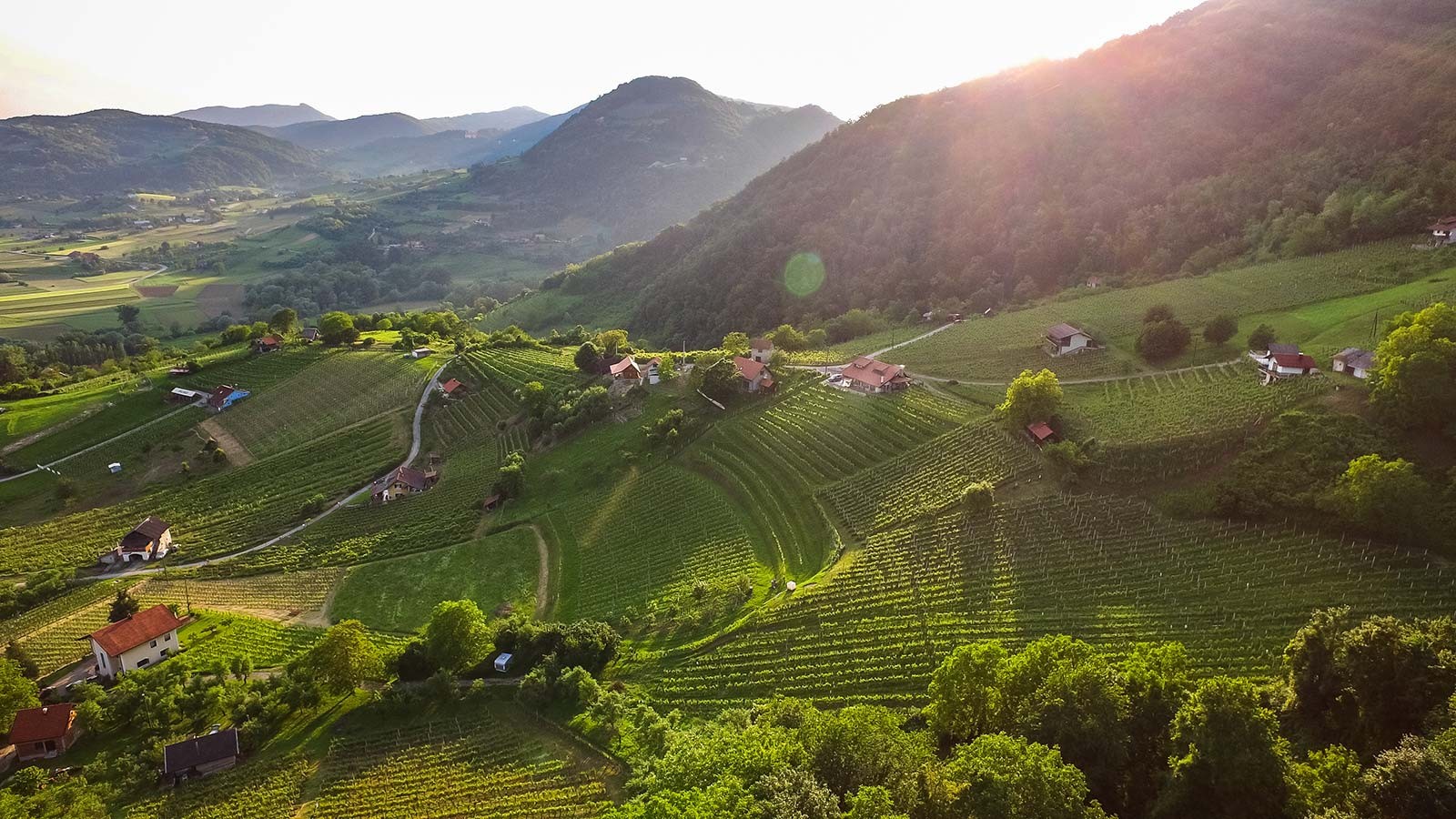 Impossibly pretty Zagorje - the region lies just north of Zagreb and is accessible by continental Croatia trains © Ivo Biocina / Croatia National Tourist Board
Impossibly pretty Zagorje - the region lies just north of Zagreb and is accessible by continental Croatia trains © Ivo Biocina / Croatia National Tourist Board
From the impossibly pretty hills of Zagorje, the peaceful rivers of Karlovac county and the hidden vineyards that surround the capital Zagreb to the vast Pannonian flatlands that stretch to Slavonia, Baranya, Vukovar-Srijem and beyond, the varied topography of continental Croatia is wild, exciting and - by many - wholly undiscovered.
This is land where agriculture and nature thrive side by side, where the stresses of modern-day existence ebb away as you readjust to a way of life that would look mostly familiar to the people who lived here centuries ago. These are places where you can truly be at one with yourself and with your surroundings. In continental Croatia, you often find yourself in an environment that is both timeless and traditional, yet wholly contemporary in regards to its ecological aspirations. And you're never far away from an exciting city environment that you can dip into on a whim – not just Zagreb, but Osijek, Slavonski Brod, Karlovac, Sisak and Varaždin too.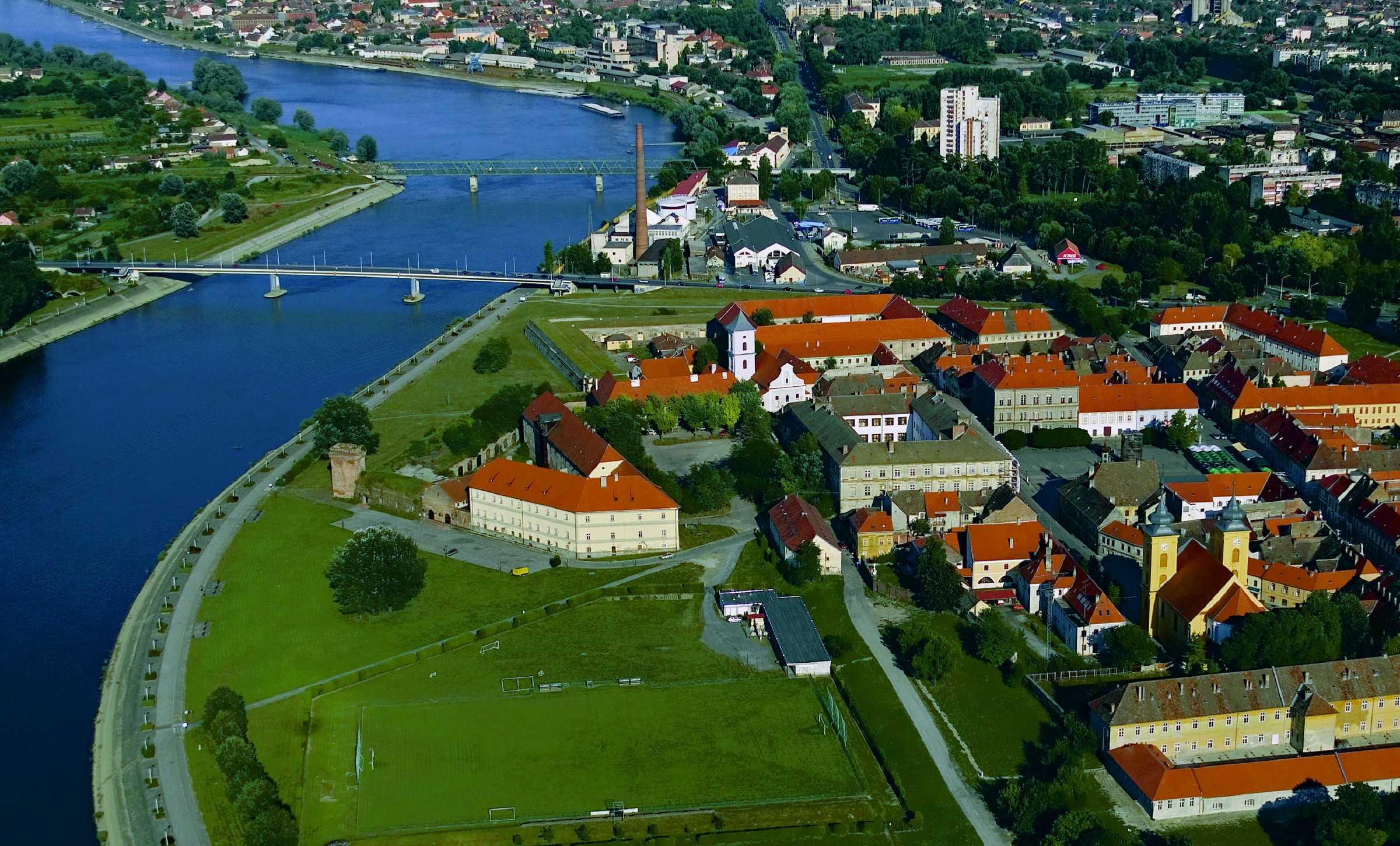 To those who really know and love Croatia, Osijek is simply unmissable. It is both the capital of and the doorway to Slavonia and Baranya and should be more accessible by continental Croatia trains. Sadly, international transportation links to the city by air are also quite poor. Improvements in accessibility to Slavonia and Baranya by rail and road are imminent © Romulić & Stojčić
To those who really know and love Croatia, Osijek is simply unmissable. It is both the capital of and the doorway to Slavonia and Baranya and should be more accessible by continental Croatia trains. Sadly, international transportation links to the city by air are also quite poor. Improvements in accessibility to Slavonia and Baranya by rail and road are imminent © Romulić & Stojčić
Unlocking the incredible potential of continental Croatia relies on getting the message out there and facilitating travel to these regions
In recent TCN features we have detailed that motorways within Croatia are among the best in Europe - once you're inside Croatia, travelling by car (or bus) between the regions couldn't be easier. We have also seen evidence of the huge interest in travelling here by rail and using continental Croatia trains.
Of all the modern methods of long-distance travel, rail is by far the most eco-friendly. What better way to begin an environmentally friendly holiday than by arriving on continental Croatia trains? When the country wisely decided to prioritise its internal motorway system, a modern and fast inter-regional rail network was put on the back burner. Nowhere suffers greater from this decision than continental Croatia.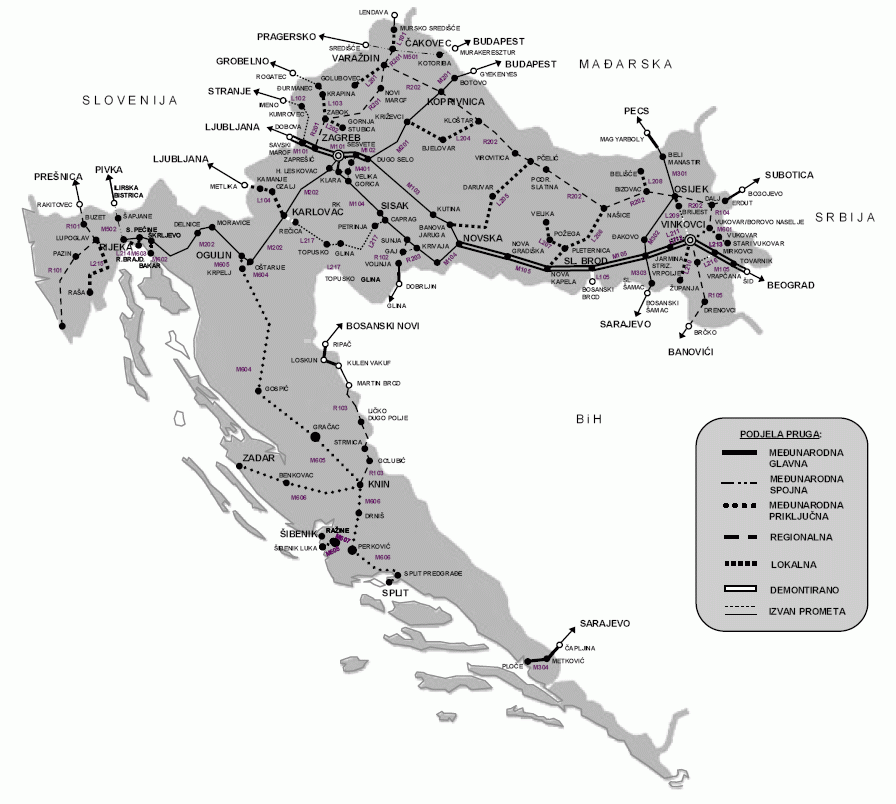 The Croatian rail network © Croatian Official Document uploaded to Wikipedia by Epepe
The Croatian rail network © Croatian Official Document uploaded to Wikipedia by Epepe
The only high-speed line that currently exists in Croatia links Rijeka to Budapest, via Zagreb and Koprivnica. Planned improvements hope to cut journey times between Zagreb and its nearest coastal city to an hour. Same as it ever was - Rijeka was the first Croatian city to be connected internationally by rail. That line also ran into the heart of Austro-Hungary and facilitated upper-class travel to places like Opatija. But does it best benefit the country to invest in more links to the coast or in continental Croatia trains? Well, the inland is not being ignored. Upgrades are being made to continental Croatia trains.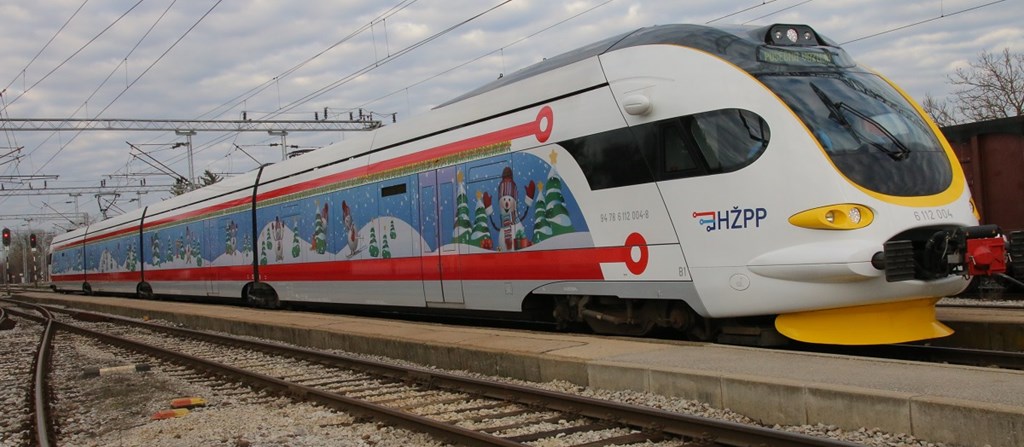 This impressive beast actually services the country's coast. But would more investment in the continental Croatia trains network better service more people and help unlock the inland to tourists? Around 70% of the country's inhabitants live in continental Croatia © HŽPP
This impressive beast actually services the country's coast. But would more investment in the continental Croatia trains network better service more people and help unlock the inland to tourists? Around 70% of the country's inhabitants live in continental Croatia © HŽPP
The rail link between Zagreb and Slavonski Brod is so historic that it was once part of the four routes of the Orient Express. It has been maintained to a standard where you can make a relatively quick journey from the capital to Vinkovci via Slavonski Brod. The same cannot be said for rail travel to Osijek, the access point to Baranya and much more. So slow is the connection between Osijek and Zagreb that it has been possible over recent times to reach the Slavonian capital quicker by taking the train to Vinkovci, then the bus to Osijek, rather than travelling direct by rail.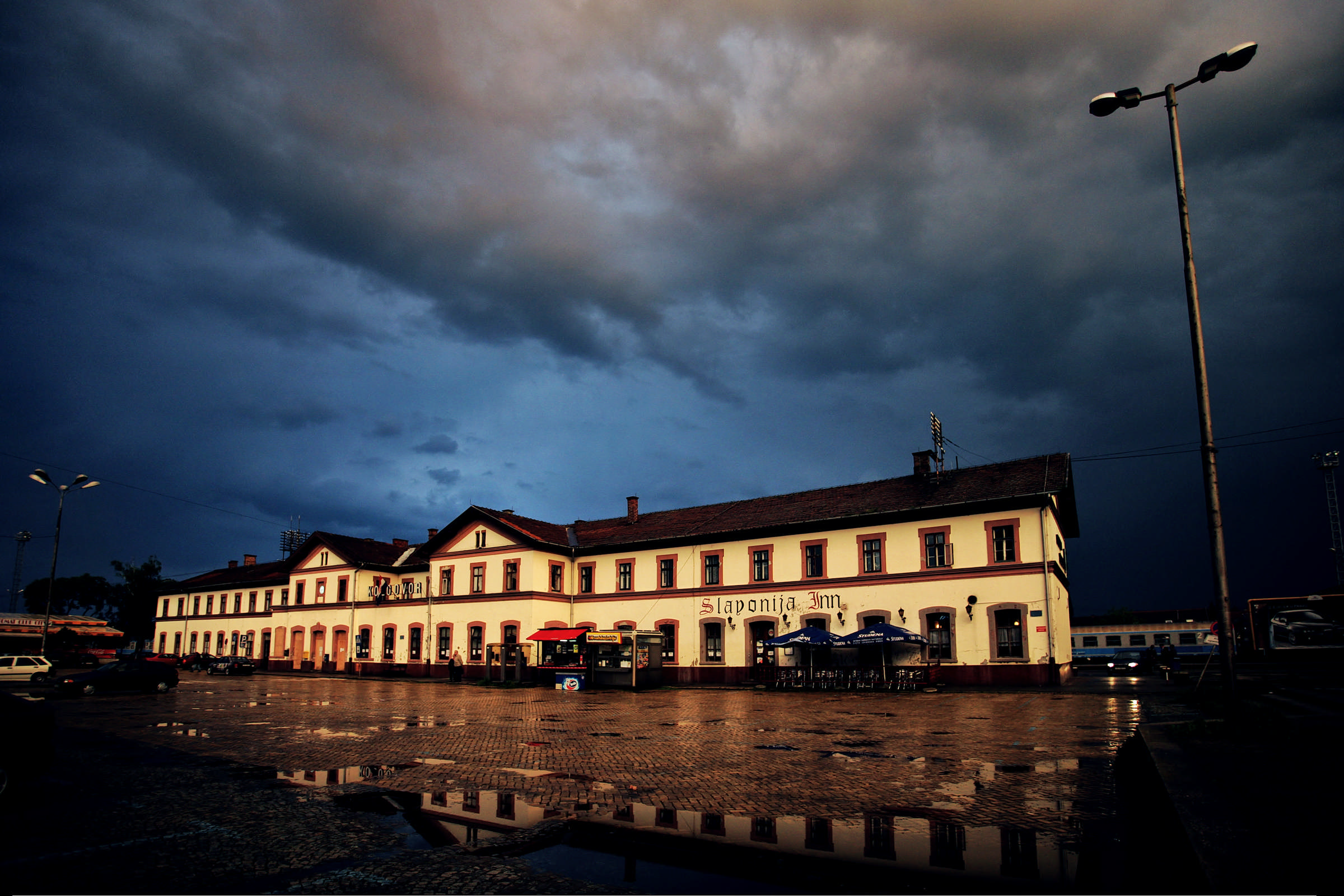 Osijek train station. A renovation to the building is planned for the near future © Romulić & Stojčić
Osijek train station. A renovation to the building is planned for the near future © Romulić & Stojčić
However, in February this year, Croatian Railways introduced four direct daily lines between Slavonski Brod and Osijek. And there will be a new tilting train line that will run between Zagreb to Osijek on Friday afternoon and from Osijek to Zagreb on Sunday afternoon, facilitating student travel. On October 15, the first low-floor train will run between Osijek and Vinkovci as an additional part of the renewal of their continental Croatia trains fleet in Slavonia. The welcome return of Croatia's second-oldest international rail line - linking Osijek to Pécs in Hungary, via Beli Manastir and Baranya - was introduced in late 2018.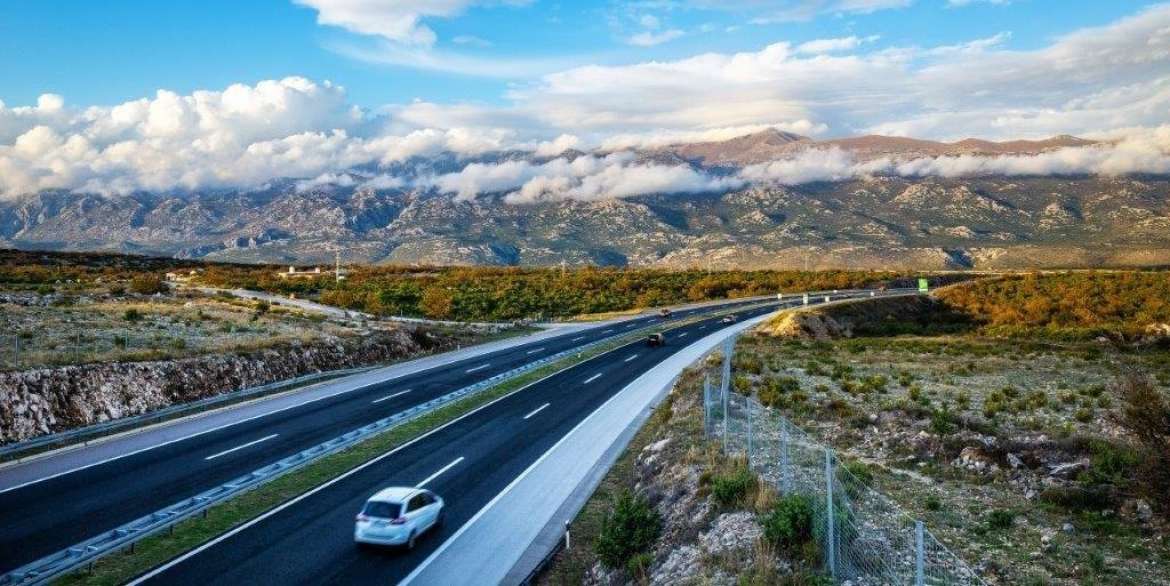 A motorway stretch between Metković and Dubrovnik, integrating the Pelješac bridge and the Croatian segment of the European corridor are the final big remaining projects in a three-decade-long undertaking to give Croatia one of the best motorway networks in Europe. Should Croatia's rail network be next? © Hrvatske Autoceste
A motorway stretch between Metković and Dubrovnik, integrating the Pelješac bridge and the Croatian segment of the European corridor are the final big remaining projects in a three-decade-long undertaking to give Croatia one of the best motorway networks in Europe. Should Croatia's rail network be next? © Hrvatske Autoceste
Access to Slavonia and Baranya will also be massively facilitated upon completion of the European corridor, which will connect North Europe to the Adriatic. Starting in Budapest, it necessitates the building of a bridge near Beli Manastir. Thereafter the motorway will pass by Osijek, connect to the Zagreb-Slavonia motorway near Lipovac, then pass through Bosnia and its capital Sarajevo and on to Ploče.
The removal of budget airline flights to the airport in Osijek remains a hindrance to attracting many international visitors to Slavonia and Baranya. However, with charter airlines facing the greatest uncertainty of all modes of transport at the current time, though their return is a must, it is perhaps now an ambition that should remain more long term. For the immediate future, improvements to rail travel look to be a brilliant way of opening up not only Slavonia, Baranya and Vukovar-Srijem, but also an eco-friendly access point capable of serving the whole of untapped continental Croatia.
For the latest travel info, bookmark our main travel info article, which is updated daily.
Read the Croatian Travel Update in your language - now available in 24 languages
Cyclists, Meet 6 Breathtaking Croatian Continental Routes
September 28, 2020 - If you enjoy discovering divine nature by cycling, Turistickeprice.hr has narrowed it down to six breathtaking Croatian continental routes. Get ready for your next adventure!
The center of the world (yes, that's the real thing!)
Cycle to the very center of the world! The magical Ludbreg is known as the world's official center, so start by conquering it by bike. The oldest and most famous bicycle path in this area is the so-called Drava path. Eighty kilometers long, the trail follows the Drava River through a series of picturesque villages and hamlets located in the Drava lowlands.
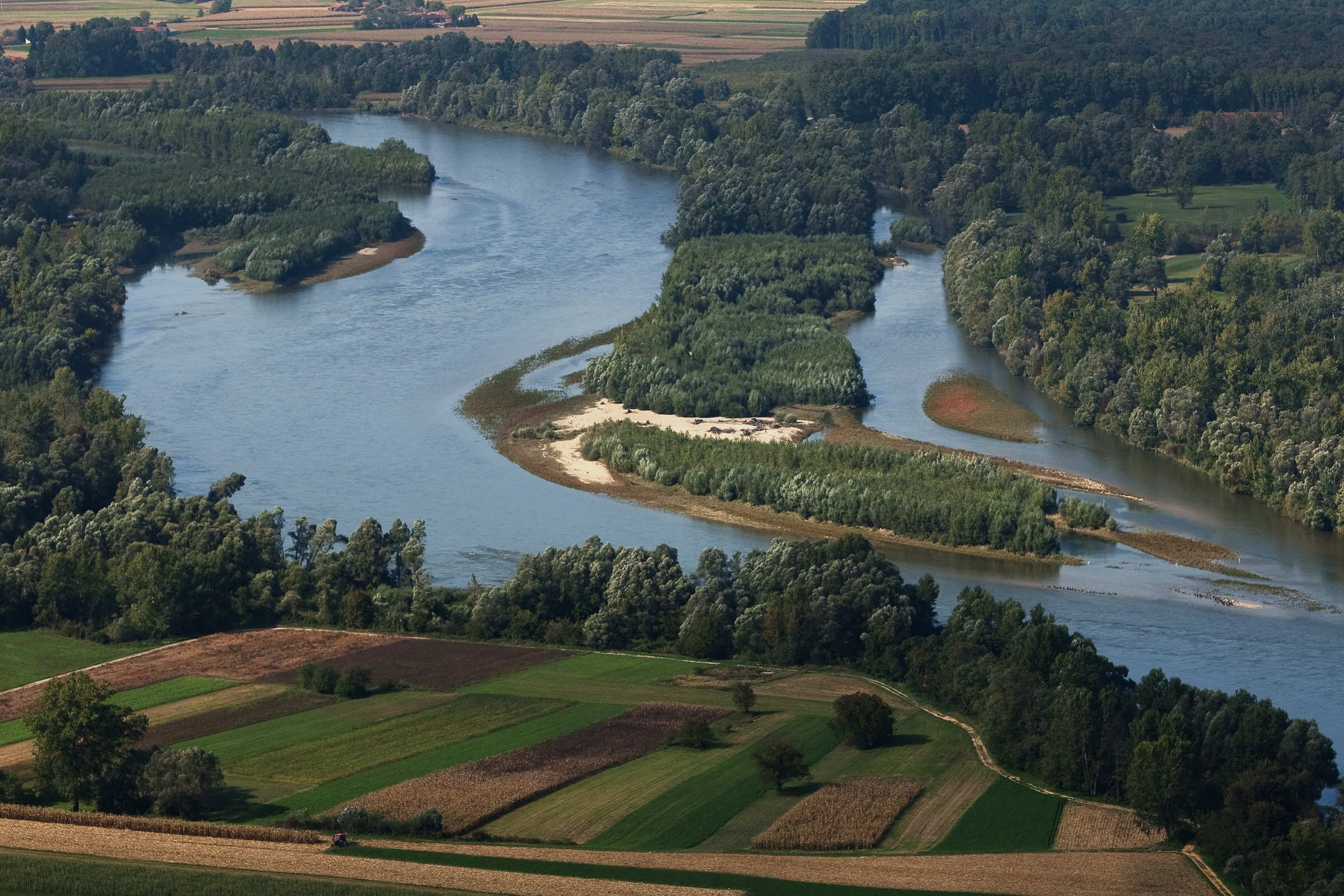
Drava River | Photo by Romulic and Stojcic
If you are a river fan, this one is for you
Do you want your ride to be accompanied by water? Continental Croatia is rich in rivers, and the roads that stretch along them offer perfect trails for more experienced road racers. Start from Varazdin or Cakovec and drive along the Drava River and the Mura estuary towards Koprivnica, Pitomaca, Virovitica, Valpovo, Osijek, all the way to Vukovar in eastern Croatia. It is more than 300 kilometers along the rapids of the river Drava. If you don’t know where to go, do what Bear Grylls does - follow the river!
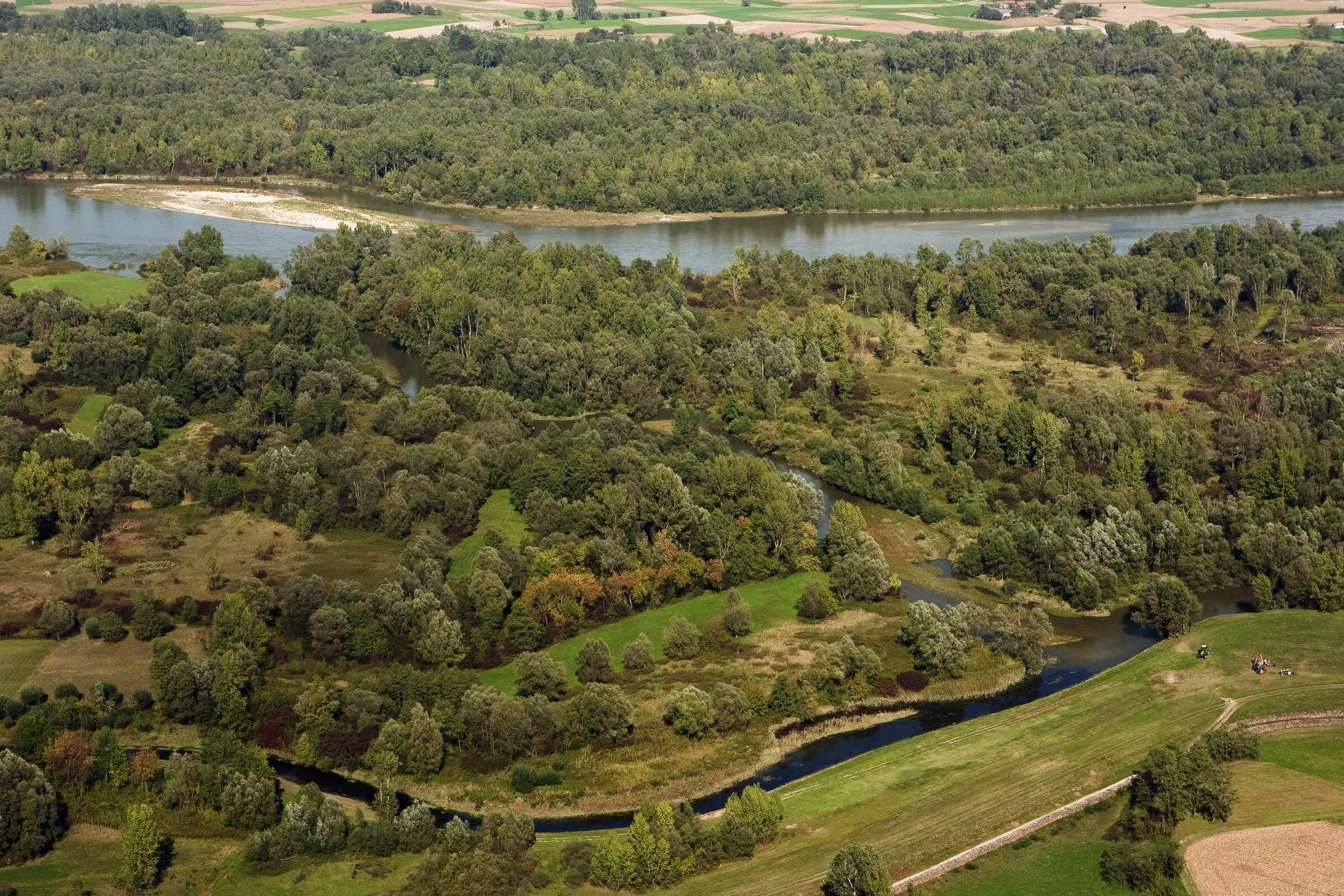
Drava River | Photo by Romulic and Stojcic
Cycling around waterfalls? You got it!
There is no greater symbol of the beauty of Croatian nature than Plitvice Lakes, which bears the title of UNESCO World Heritage Site and is visited by more than a million people every year. However, few do so by bicycle. Around the Plitvice Lakes National Park, there are beautifully landscaped bike paths of all levels of difficulty, and many take you to areas of this park that are far from the reach of other tourists. Want to have a day to remember? Start from Karlovac and drive about seventy kilometers along the old mountain road towards Josipdol. Well, that's a real challenge!
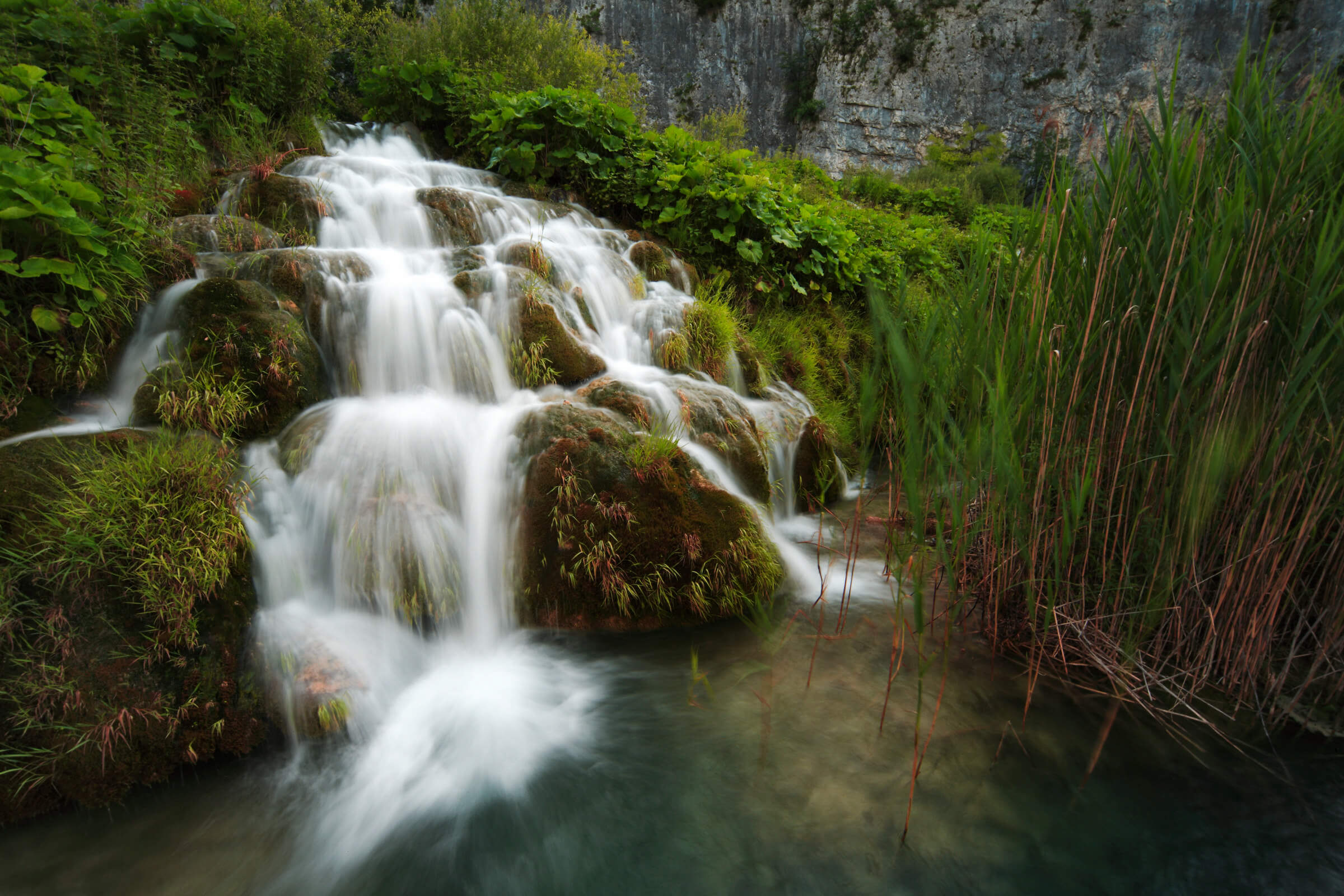
Plitvice | Photo by Romulic and Stojcic
Do you like fairytales? Trakoscan awaits for you!
If you are looking for your prince or princess, take a peek at the castle! This gem, located along the border of Croatia and Slovenia, is called Trakoscan. It is one of the most important Croatian castles, and equally attracts tourists and cyclists. Who knows, maybe among them you will find the "right one". If you are not interested in fairy tales about princes and princesses and you are looking for an ordinary man with traditional skills, there is no better place than Krapina, where the magnificent Museum of Krapina Neanderthals is located. The popular circular path that leads to the castle begins and ends in Djurmanac, and includes a 38-kilometer drive along the Macelj mountain, at an altitude of approximately 380 meters.
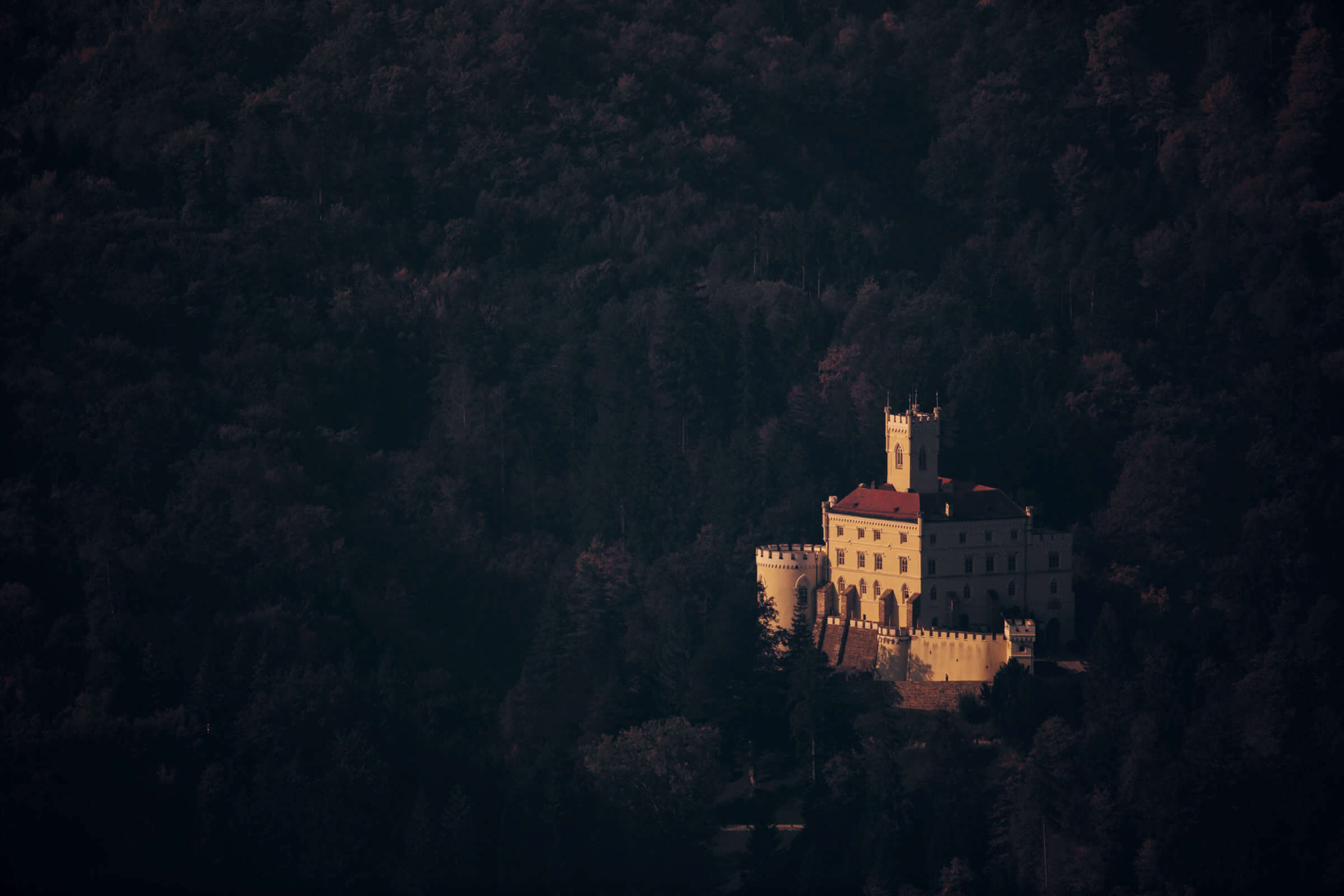
Trakoscan | Photo by Romulic and Stojcic
Escape the city, go to the Medvednica Mountain
Head to the Medvednica Nature Park, only twenty minutes away from Zagreb. Not far from the hustle and bustle of Zagreb, with an altitude of up to 1000 meters, this place is a paradise for cyclists eager for adventure, whether it is road or mountain biking. It’s a real challenge when you have to climb an hour and a half by bike to the top of the mountain to get down to the base in fifteen minutes. The adrenaline will rush through your veins as you ride the Medvednica bike trails - because they are truly breathtaking!
Photo by Romulic and Stojcic
The golden route, rich with wine
The smallest and northernmost Croatian county is known for washing gold, and there is the first oil field in Croatia (and the world!). Medjimurje offers many top bike trails that stretch throughout the county, and this region is also known for the production of top wines. With a concept that combines the pleasure of wine and the pleasure of cycling, visitors have the opportunity to experience the two main attractions of Medjimurje at once.
For the latest travel info, bookmark our main travel info article, which is updated daily.
Read the Croatian Travel Update in your language - now available in 24 languages
Join the Total Croatia Travel INFO Viber community.
3 Million Euro Luxury Glamping Village Opens at Terme Tuhelj
As Jozo Vrdoljak/Novac writes on the 25th of June, 2020, as part of the already popular Terme Tuhelj complex which is located in continental Croatia, a new luxury glamping resort has been opened. It is an investment worth three million euros and marks another cash injection that the coronavirus pandemic hasn't put a stop to.
The modern glamping resort at Terme Tuhelj is an upgrade to the existing Vita camp, the first five-star camp in continental Croatia, which opened its doors last summer - which, in stark contrast to this one, was remembered as a record one for the Croatian tourism sector.
"We have clear goals, a vision and a strategy, which has been confirmed by the [opening of] the new glamping resort, which will soon, I'm convinced, be full of guests. We know that we're on the right track. Last year, we generated ten million euros in revenue and 136 thousand overnight stays, almost a third in Krapina-Zagorje County.
With continuous investments from year to year, we're continuing to raise the bar of quality and respond to the demands of the tourism market, we're look positively to the future during these uncertain times that did slow us down, but they didn't stop us from realising our plans,'' said Vasja Cretnik, the director of the new Terme Tuhelj Luxury Glamping Village within the Terme Tuhelj complex.
The new Glamping Village offers 36 modern mobile units, a wellness area, a whirlpool, saunas and massage rooms. The investment, which is worth three million euros as previously stated, was realised in cooperation with their Austrian partner Gebetsroiter, a company with almost forty years of tradition in creating the highest quality camping destinations.
All of the facilities of the camp, as well as the various attractions in Terme Tuhelj - from the Sauna World, through to the rich wellness offer to Water Planet with its popular swimming pools and adrenaline slides - are available to the guests of Glamping Village.
For more on continental Croatian tourism, follow our travel page.
Croatia's Green Heart: Explore Beautiful Lika for Less Until September
Unfortunately, Lika continues to be a part of Croatia that most only get to see when driving through it, either from Zagreb down to the coast or back again. This gorgeous part of the country is lush and green, full of rolling hills and picturesque little towns and villages and even more history and nature.
Known for much more than just Lika potatoes and lamb (although they're both entirely worthy of their fame), Croatia's green heart has never particularly been associated with tourism, which is dominated by the coast, until somewhat recently. With the coronavirus pandemic having forced us into a ''new normal'' in which Croatia's strongest economic branch, tourism, is suffering, why not explore Lika for less?
As Lucija Spiljak/Poslovni Dnevnik writes on the 8th of June, 2020, more than half of the territory of Lika is located in the ecological protected network of EU Natura 2000.
This gorgeous part of Croatia and its numerous attractions will be even more accessible to visitors until the end of September this year, with benefits they can take advantage of by presenting a ticket for the famous Plitvice Lakes National Park.
They announced this from the national park itself and stated that kayaking on the Gacka river will be 35 percent cheaper, the cost of electric bike rental around Plitvice Lakes will be slashed by 30 percent, the price of quad safaris through the Gacka Valley and Velebit will be cut by 25 percent, there will be a 15 percent discount on the use of zip lines, and much more.
As the director of the Plitvice Lakes National Park, Tomislav Kovacevic, explained, this is all part of the destination project called Plitvice Experience in Lika, within the scope of which they decided to combine numerous opportunities for active tourism, and Kovacevic referred to the initiative as ''one of the best tourist-cultural-landscape-historical adventures in the Republic of Croatia''.
In addition to kayaking, rowing, exploring the flora and fauna of beautiful Lika and quad biking through the Gacka Valley and Velebit, a tour of the airplane museum and much more will be organised.
As previously touched on, more than half of the territory of Lika is located in the ecological protected network of EU Natura 2000, which unites the national parks of Plitvice Lakes, Northern Velebit and Paklenica, the Velebit Nature Park and many more stunning areas in Lika within a special biosphere reserve, along with its wild variety of natural phenomena.
The move rightfully brands Lika as a destination full of protected areas, where more than fifty species of different (medicinal) plants grow freely, and Lika food products are labelled as being of Lika quality.
For more, follow our travel page.
New Tourist Facilities at Slavonia's Amazing Papuk Nature Park
The renovation and equipping of the "Pannonian Sea House" is part of the praiseworthy "UNESCO Geopark Geostories" project at the incredible Papuk nature park, which was once in the middle of a sea.
As Poslovni Dnevnik/Marta Duic writes on the 6th of February, 2020, sixteen million years ago, Papuk was an island in the Pannonian sea inhabited by rhinos and being swum around by a now extinct species of shark. This is extremely difficult to imagine today, given that the modern day Papuk nature park is located in Slavonia, far from any sea.
Numerous fossils of now extinct living organisms, mostly marine animals, testify to the ancient past of this "Slavonian archipelago", located in Velika, within Papuk nature park. The popular continental Croatian nature park has now received a new, impressive exhibition - the Pannonian Sea House.
This visitor-education centre was opened back in late 2019, is part of the already existing Visitor Centre in Velika, and covers an area of 158 square metres. Along with impressive exhibition halls, there are multi-purpose lecture rooms for interactive lectures, a gift shop and even an outdoor classroom.
The renovation and equipping of the "Pannonian Sea House", worth almost five million kuna, is an important part of the "UNESCO Geopark Geostories" project, which is co-financed by the Ministry of Regional Development and EU Funds. In addition to the Pannonian Sea House, the project also purchased electric and mountain bikes for rent in Velika and in the Jankovac Forest Park.
The adrenaline park was built in Velika last year, and the first eco-park, Duboka, was opened three years ago, powered by solar panels and which has its own recycling yard and biological water purifier. This has made Pozega-Slavonia County, which is otherwise almost entirely overlooked by tourists, a top Croatian destination for anyone considering the environment, as well as for lovers of walking, hiking and recreation.
Otherwise, Papuk nature park had a record number of visitors in 2019, with 52,485 tourists visiting it - almost 50 percent more than a year earlier. There is no doubt that the Pannonian Sea House, as a testament to life as it used to be in the area, will attract new visitors, especially schoolchildren, who will learn about the geological story of this region in both an original and in a technologically advanced way.
In addition to the new tourist attraction, at the end of the year, the directors of five tourist boards gathered in Croatia to jointly promote the beauty and the tourist offer of this often forgotten region, namely Slavonia, and work together to promote and present Slavonia as Croatia's new tourist destination.
The Slavonia destination project will have an impact on the development of small and medium-sized enterprises (SMEs), as it implies a greater use of new technologies and communication platforms in the promotion and marketing of tourism products, and therefore the greater involvement of local businesses.
Make sure to follow our travel page for more information on Papuk nature park and much more.
Koprivnica Wins Awards for Continental Tourism, Most Ecological Town
As Poslovni Dnevnik writes on the 7th of January, 2020, the continental Croatian town of Koprivnica will remember 2019 as an extremely successful year, not only by the numerous activities carried out by the local government and by local companies, but also by the many awards won.
As a continental town, Koprivnica has won two tourism awards, the award for the best continental tourist destination of the Vecernjak Tourist Patrol, while the town's popular Renaissance Festival won the Tourism Event of the Year from the Croatian National Tourist Board (HTZ), the Ministry of Tourism, and the Croatian Chamber of Commerce (HGK).
In spring, the first living public lighting laboratory was opened, not only was it the very first in all of the Republic of Croatia, but in this part of Europe, in which a dozen manufacturers of public lighting equipment and smart solutions test, present, and also use everyday.
This functional blend of smart solutions, public lighting, energy and everyday city life is the winner of Poslovni Dnevnik's award in the smart energy/environment category.
When it comes to environmental care, Koprivnica is also the recipient of the award for being the most environmentally friendly town, as the town that cares most about its environment and waste management system. At the end of last year, more than 50 percent of the collected municipal waste had already been properly sorted and separated at home and then through the recycling yard, and the construction of a second recycling yard worth over 5.2 million kuna is being co-financed by the EU Competitiveness and Cohesion operational programme in the amount of 85 percent.
A new entrepreneurial/business incubator for creative industries, worth 18 million kuna in total, has been built with European Union money, and it has already filled its premises with young and new entrepreneurs in just a few months.
The energy renovation of Koprivnica's Braća Radić elementary school in the amount of 10.6 million kuna has also been completed, and at the same time, the contract for the energy renovation of the Antun Nemčić Gostovinski elementary school has been signed.
The town's Tratinčica kindergarten (2.8 million kuna) was also renovated energetically. In addition to facilities providing elementary education, a brand new kindergarten will be built with European Union money in the suburban settlement of Starigrad worth 7 million kuna, and a newly constructed junction road (worth 7.8 million kuna) that connects Starigrad with the suburban settlement Reka will be opened. These projects prove that Koprivnica is justifiably included in the Top 10 Croatian cities when it comes to the withdrawal of money from EU funds.
2019 also marked the hundredth anniversary of the Domoljub Hall (Dvorane), the cultural and educational centre of Koprivnica, and its significant anniversary saw 1.1 million kuna invested in the renovation of the hall itself. For the fourth year in a row, the upward trend in job creation continues, and Koprivnica's budget has been a record in the last ten years, which is a direct indicator of positive economic activity. In addition to this are new entrepreneurial measures that have resulted in the signing of construction contracts in the Koprivnica entrepreneurial/business zones, contributing to more work and as such - more job opportunities.
This year, the project of the construction of a new elementary school in Podolice with a new hall as well as the halls at the Đuro Ester primary school begins, as does the reconstruction of the city centre - Zrinski square (trg), the construction of two new roundabouts to increase road traffic safety on important and large roads, municipal infrastructure and, of course, the Koprivnica Water Agglomeration project worth 512 million kuna, with which 23 kilometres of new water supply and sewerage network are in the works.
Make sure to follow our lifestyle page for much more.
EU Funds Turning Old Croatian Castles into Hotels and Museums
EU funds have opened up a wide variety of doors for Croatia, quite literally. As more and more EU funding is accessed, more former Croatian ''glory'' buildings, including old castles and palaces, are having new life breathed into them.
As Poslovni Dnevnik/Marija Crnjak writes on the 28th of May, 2019, in July in Suhopolje near Virovitica, a visitor's centre will be opened up at Janković castle, marking the creation of a brand new attraction for Virovitica-Podravina County, in which a total of 39.7 million kuna will be invested, of which 33.4 million kuna is being funded from European Union fund for Regional Development, permitted under the Preparation and implementation of Integrated Development Programs based on the Reconstruction of Cultural Heritage.
This is just one of the projects which directly involves the revitalisation of a series of castles, noble and ex-military buildings in the aforementioned county, and putting them into the function of tourism within the so-called. Plemićka ruta. At the moment, there are projects in their various phases of implementation or completion of a total value of up to 276 million kuna, as was revealed yesterday at the project's presentation in Zagreb by Josip Mikolčić, assistant director of the VPŽ (Virovitica-Podravina) Tourist Board. Last year, 16,033 tourists visited this continental Croatian county, achieving an impressive 40,276 overnight stays.
"Participating in EU projects is a great opportunity to rebuild many of the neglected facilities that we'll then put into the function of tourism. The county still has a bit of hotel accommodation, which we need to modify so that we can make a significant income from tourism," Mikolčić explained.
Namely, as EU funds can't provide non-refundable money for the construction of hotels, a solution has been found by the Croatian county in question to create presentation centre projects that later be turned into hotels. In addition to the multimedia exhibition hall, 5D cinema and creative lab, Janković will also have fifteen guest rooms, which will initially be registered as rooms for rent, and after five years have passed, another fifteen rooms will be added and the facility will be registered as a heritage hotel, at least that's what the current plan is.
Then, Virovitica-Podravina County will be able to sell that hotel to a private investor, as well as all of its other facilities.
As it is already known, an informative-educational centre and a hostel in a restored summer residence from the nineteenth century have been on the market for about two years now. The Heritage Hotel Kurija Janković is on the Plemićka ruta, and the opening of a museum in the renovated Pejačević Castle is expected this October.
The renovated Ružica grad from the fifteenth century will be receive its first guests within the next 1.5 years, while on the island of Križnica on the border with Hungary, former military facilities will be turned into a camp and a visitor's centre.
Make sure to follow our dedicated lifestyle page for much more.
Click here for the original article by Marija Crnjak for Poslovni Dnevnik
Huge European Investment Coming to Bjelovar-Bilogora County
A huge European investment for Bjelovar-Bilogora County has been achieved, and usage permits are expected in just a few weeks time.
All too often we're bombarded with depressing tales of failed investments, lost money, shattered dreams and the infamous red tape of the Croatian state which seems to want nothing more than to stop potential investors with cash in their pockets from putting their money where their mouth is in Croatia for the benefit of everyone.
When confronted with such headlines and stories on a daily basis, it can often be difficult to believe, let alone imagine, that not everything is always quite so bleak here in Croatia. While many would-be investors try and fail at the first (or first several) needless hurdles put in place by Croatia's blank-faced uhljebs (rough translation: pointless state employees/oxygen thieves), there are many who do persevere, and succeed. But, we'd all much rather be depressed and have something to complain about over a four hour coffee while we ourselves could be working, right? Right.
The fact of the matter is, Croatia is slowly but surely improving when it comes to investment, and while the country has an awfully long way to go before it could ever be considered even remotely investor friendly or truly safe, progress is being made at a snail's pace - the Croatian way.
As Poslovni Dnevnik writes on the 28th of May, 2019, one of the largest European investments is set to come to no less than Bjelovar-Bilogora County in continental Croatia, in the form of a Technology Park in Garešnica. The park was planned and then built in the Kapelica Entrepreneurial Zone, and the value of the investment is an enormous 21.5 million kuna. Most of the money, as much as 92 percent of the total amount, was invested by the European Regional Development Fund, according to a report from Tocka na i.
Bjelovar-Bilogora's new Technology Park stretches to nearly 1,800 square metres, boasts an impressive eighteen business premises, a conference and education hall, as well as a meeting room. The issuance of a usage permit is expected in early July, followed by the final conclusion of the contracts with entrepreneurs.
Josip Bilandžija, Mayor of Garešnica, is convinced that Bjelovar-Bilogora's brand new Technology Park will definitely reach completion. There will be places for eleven new and three already existing companies, and assistance in development projects will be readily provided by the Entrepreneurial Incubator from Osijek, as well as the Entrepreneurial Centre in Garešnica.
Make sure to follow our dedicated business page for more on investment in Croatia, doing business in Croatia, working in Croatia, and much more.
Most Successful Croatian Company Coming to Veliko Trgovišće
Veliko Trgovišće is a little place in the continental Croatian county of Krapina-Zagorje. If it wasn't for independent Croatia's very first president Franjo Tuđman having been born there, it would certainly be even less known than it is now, as this unassuming little Zagorje municipality has a mere 5,000 inhabitants and is very rarely talked about in the media.
As Poslovni Dnevnik writes on the 15th of May, 2019, RTL Direct went directly to this small municipality to try and see just what it has to offer. They found out that Veliko Trgovišće is no stranger to the production of tablecloths, napkins and linens which travel from Veliko Trgovišće to London restaurants and even to Las Vegas casinos.
Finka has been working there for 37 years and she's one of eighty people working in this village's textile factory, and she states that people in Zagorje will ''never remain hungry'' when discussing what it's like to live in this very rural and little known part of Zagorje.
That same factory moved ten years ago from the Croatian capital of Zagreb, taking part of its workers with it.
"The Trgovišće Factory is the largest garment manufacturer, it exports to 25 countries all over the world, from England and Switzerland, to exotic destinations like Dubai,'' stated Dražen Kolarek, finance manager at the factory.
Mate Rimac and his company, otherwise one of the most successful companies in the whole of Croatia, Rimac Automobili, is also on his way to this little Croatian county, and you can read his entire interview here.
This Croatian municipality has a few successful businesses, unemployment there is at less than an enviable three percent, the first Croatian president was born there, and they also want the status of a city there. That ''city'' status will likely be obtained because, as Veliko Trgovišće's Robert Greblički has already stated, this little Croatian municipality meets all of the necessary prerequisites.
"The first president was born here, we're raising the number of people living here, we're developing entrepreneurship, so I think that we can copy Sveta Nedjela in time," Greblički added.
As soon as this completely unassuming little Croatian municipality gains its city status, it can truly become, as its name suggests: Big (Veliko).
Make sure to stay up to date by following our dedicated business page for much more on Croatian business, Croatian companies and Croatian manufacturing.


